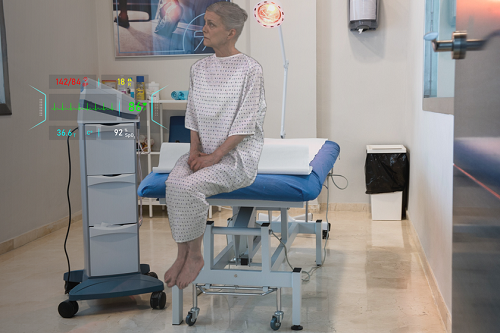The collaboration between GigXR, Cambridge University Hospitals (CUH) and the University of Cambridge Faculty of Education, brings medical training using “mixed reality” technology one step closer.
It will also make consistent, high-level and relevant clinical training more accessible anywhere in the world.
Mixed reality combines real-life physical environments with hyper-realistic virtual elements.
Trainees including medical students, nurses and doctors seeking to enhance their clinical skills, will be able to use holographic patients to practice high-level, real-time decision making and treatment choice.
The first training models being created include emergency scenarios and deteriorating chronic conditions that lead to hospitalisation, focusing on the responses and human factors needed to provide accurate care in both types of situations.
Dr Arun Gupta, CUH consultant and Director of Postgraduate Education, Cambridge University Health Partners, said: "Mixed reality not only allows us to create patient holograms that will have realistic medical responses to interventions, it also merges the latest advancements in hardware devices, software, remote capabilities and expertise.
“Simulating real-world, real-time medical care requires interactive, responsive patients, training tools and evolving scenarios that conventional methods cannot accurately recreate.
“By partnering with GigXR, we hope to kick off a new era of simulation that facilitates the seamless exchange of global medical knowledge which transforms theoretical insights into true-to-life practice.”
Instructors will be able to share scenarios, change patient responses, introduce complications and record observations and discussions, while projecting the hologram via a mixed reality headset into any physical training environment, whether a classroom, large teaching hospital, a small rural campus or remote on-demand study.
Learners can access, observe and assess the holographic patient simulations from either a mixed reality headset or an Android or iOS smartphone or tablet.
Dr Riikka Hofmann, Associate Professor in the Faculty of Education at University of Cambridge said: “With mixed reality, we can overlay as many or as few digital elements on the learner’s physical space as needed, whether that is simply the hologram patient or with medical equipment. This ensures the environment is relevant to the training."
"A virtual state-of-the-art ER is not helpful if you practice in a small rural hospital without that equipment – the holographic simulations we’re creating with GigXR remove this barrier."
David King Lassman, CEO at GigXR. said: “Cambridge has forged an industry-leading path in the integration of mixed reality, medicine and the learning sciences.
“We are honoured to be working with this world-class university, hospital trust and research team. Capitalizing on a tradition of innovation that has already included landmark work on DNA and the discovery of monoclonal antibodies, the University of Cambridge continues to create programs and tools for tomorrow’s healthcare leaders.”
GigXR, a global provider of eXtended Reality (XR) solutions for instructor-led teaching and training, will work with CUH and the University of Cambridge, to co-create holographic acute care simulations deployed through GigXR’s Immersive Learning Platform.
The partnership plans to launch the first holographic simulations in mid-2022.
Image: A hologram patient waiting to be treated by students
